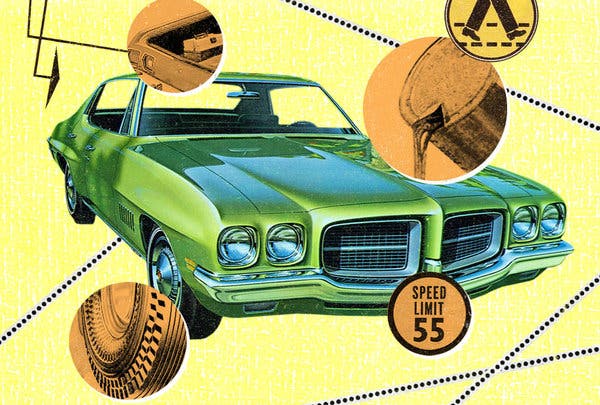
Those of us a certain age remember the mid-1980s rock anthem “I Can’t Drive 55,” by Sammy Hagar.
It’s a funny, ridiculous song, coming out about a decade after the country established a nationwide maximum speed limit of 55 mph in reaction to the oil shock of the 1970s.
The video for the hit song is equally silly. Hagar rips down the road at the wheel of a low-slung sports car, engaging in multiple near head-on collisions before finally being arrested and dragged off to jail.
Look, I like the rev of an engine as much as the next guy. I remember being 18 and at the wheel for the first time. But think about how the Hagar approach works out on a long road trip, say, across the entire country.
Your retirement investments, as it turns out, work the same way.
Now take that speed up to, say, 85 mph on average. You shave off a day, logging 33 hours or 4.1 days. Great. But what else happens?
For one, you run the risk of being stopped for speeding, probably more than once. That’s hundreds of bucks for a ticket, plus your car insurance will go up. Even if you get away with burning up the freeway, you’re driving harder and less efficiently as you speed up.
The real danger, however, is never making it at all. An academic study of highway fatalities after the 1995 repeal of the nationwide speed law showed a 17% increase in deaths on U.S. highways following just a 4% increase in the speed limit.
That’s a mirror image of the lives saved after enacting the national limit, which was 16%.
Naturally, every driver thinks he or she is perfectly OK going whatever speed they deem safe for themselves. Psychologists have long established that most people rate themselves a seven on a scale of 10 for driving ability, even while simultaneously rating all other drivers lower.
It’s impossible for everyone to be above average, in driving or investing. Yet many investors seem to think that their particular approach — their “edge” or strategy at the moment — is perfectly fine, while others are clearly mistaken.
A higher chance of actual death should give anyone at the wheel pause, but it applies especially to long-term investors. If your goal is to live on your savings from decades of work, the vehicle you want is one that is secure enough to get you there with very little risk of becoming a flaming wreck on the roadside.
Putting money on it
It’s not hard to find real-life examples of the “flaming wreck problem” in investing. Hedge funds are particularly susceptible.
A few years ago a hedge-fund investor named Ted Seides took on Warren Buffett in a 10-year wager, with proceeds going to charity. The bet — an investment in the S&P 500 through an index fund (Buffet’s view) would beat any actively managed strategy (Seide’s pick) over 10 years.
The results were shocking but to Buffett no surprise at all. His index pick returned 125.8% over the decade. The five hedge funds picked by Seides returned 36%.
What happened? The hedge funds did well the first year but then failed to beat the index for the next nine years straight.
As Buffett wrote to investors in his annual letter in 2017: “The bet illuminated another important investment lesson: Though markets are generally rational, they occasionally do crazy things. Seizing the opportunities then offered does not require great intelligence, a degree in economics or a familiarity with Wall Street jargon such as alpha and beta.”
“What investors then need instead is an ability to both disregard mob fears or enthusiasms and to focus on a few simple fundamentals. A willingness to look unimaginative for a sustained period — or even to look foolish — is also essential,” Buffett wrote.
I recently undertook a similar bet, also for charity, at a more manageable scale. My view is that just owning the market efficiently and cheaply through low-cost index funds is best. My game opponent, Jeff Heller, believes that his selection of dividend stocks will be a better route to returns. It will be an interesting 10 years.
Sure, you might feel dumb on the highway with the car set on cruise control, going 65 mph on the dot. Lots of cars are going to pass you, and it’s probably better that you avoid the far-left lane.
Over a long trip, though, you’ll avoid a host of troubles by sticking to the limit. Faster moving cars tend to bunch up, cutting stopping distance drastically. Fast drivers also have to make more decisions more quickly, over and over. Retirement investing is different.
Drive for five days across the country. You’ll see plenty of other drivers pulled over by police. Chances are you’ll come up on a wreck or two along the way.
As long as that wreck isn’t you and your family, you’ll get to where you’re going just fine.





